Lingual Braces vs. Invisalign: Which Is Better?

As modern technology has advanced, so have the opportunities to straighten teeth in a multitude of ways. Because of this, lingual braces and Invisalign have become popular options for orthodontic care due to their discretion and near-invisibility. While lingual braces have brackets and wires attached to the backside of the teeth, Invisalign offers braces-free care with the use of clear, removable aligners. Both options have their pros and cons, and should be chosen upon an individual’s needs and wants. Find out whether lingual braces or Invisalign is the best option for your orthodontic needs with this guide!
What Are Lingual Braces?
Millions of teenagers and adults have braces put on each year, and most pick the traditional metal braces that we’re all so used to seeing. However, traditional braces can be bulky, annoying and embarrassing for teenagers and adults alike, and many patients feel like they’re distracting. Lingual braces are another option for patients who prefer invisible treatment over big, bulky braces, plus they can achieve the same straight, beautiful teeth that other treatments provide. Instead of wearing braces on the outside of teeth, lingual braces attach the brackets and wires to the backside (lingual side) of teeth for an inconspicuous and nearly-invisible treatment. Other than aesthetic concerns, patients opt in for lingual braces as they make it easier to play wind instruments, such as the flute or tuba, and they’re more functional for athletes that play contact sports. However, not every orthodontic office offers lingual braces; orthodontists have to complete specialized training to be able to install lingual braces, so you’ll have to do your research to find out who in your area is qualified to perform treatment.
Additionally, lingual braces can take longer to get used to since they’re on the backside of your teeth, close to your tongue. They can make swallowing more difficult as the tongue can’t thrust between your teeth as easily as it could before. Patients also have to have long enough teeth to provide enough room for the braces to be glued onto them, so children and those with small teeth typically don’t qualify for this type of treatment. Lastly, treatment time is usually longer with lingual braces than traditional braces. The entire process depends on your orthodontist and how well you take care of your teeth during treatment, so treatment time varies from patient to patient.
How Invisalign Works
Another option for patients who prefer invisible orthodontic care is Invisalign, which uses clear, removable aligners to fix malocclusion over a period of several months or years. Some patients highly dislike the look of metal braces, lingual or not, and Invisalign offers them the care they need without having to sacrifice their confidence at work or social events. Many enjoy Invisalign because its unique treatment allows them to remove their orthodontic device during eating, drinking, flossing and brushing, making these daily activities much more manageable. They let you eat all of your favorite foods, you can’t break a wire or bracket, oral hygiene isn’t hindered and they’re virtually invisible.
Wearing Invisalign retainers does take time, effort and patience, however. One aligner is worn for one to two weeks before replacing it with the next one in line. You’ll have a checkup every six to eight weeks to monitor your teeth and receive a new batch of aligners to wear for the next several weeks. During this time, Invisalign aligners need to be worn for 20-22 hours of the day, which is a huge commitment for busy people. Aligners also need to be carefully washed and cleaned with a toothbrush each night to keep bacteria from growing. Since they’re removable, Invisalign aligners can be easily lost, misplaced or broken by a fall or child, so extreme care will be necessary to keep them intact.
Making A Choice
Both lingual braces and Invisalign are viable options for patients who want orthodontic care that is undetectable and discreet, but whichever you choose is up to you and your orthodontic needs. The first step that you’ll need to take is to visit with your orthodontist for an evaluation of your teeth and to discuss which of the two would work best for your wants and needs, plus the orthodontist’s recommendation. Remember that while Invisalign is a great option for those who want to take their orthodontic care into their own hands, it requires extreme responsibility and care for the aligners you’ll be using. Lingual braces, on the other hand, will always remain in your mouth, so you won’t need to worry about losing anything like you do with Invisalign, but flossing and brushing can be more difficult as you’ll have to do it all from the backside of your teeth. Your choice should be based on what you are willing and not willing to do during treatment, so do your research on both options to be fully informed on what to expect.
Schedule Your Consultation
To be evaluated for lingual braces or Invisalign, call Belmar Orthodontics at (303) 225-9016 to schedule a consultation. Our team is qualified and experienced at installing both lingual braces and Invisalign, plus we can give you extra tips on how to keep your teeth brilliant and healthy during treatment. Call today to start your journey to a more beautiful smile!
Perks of Lingual Braces

As modern technology has improved the tools and appliances that are now used in orthodontic offices, there are more options than ever for patients to get straighter teeth without the look of traditional metal braces. Lingual braces are an ideal option for patients who want orthodontic care but in the most discreet way possible. By using a hidden apparatus on the tongue-side of your teeth, you can get straight, beautiful teeth without sacrificing your confidence. Find out what other perks lingual braces have and what treatment looks like with this guide!
What Are Lingual Braces?
Braces have come a long way since they were first invented, and patients have more options than ever to get the straight teeth they want without sacrificing their confidence. Traditionally, metal braces were the most common type of orthodontic appliance used but were bulky and aesthetically not very pleasing. With the modern technology that has been developed during the last few decades, one type of braces in particular has become more and more common. Lingual braces are an alternative to traditional metal braces and provide utmost discretion as they are almost completely hidden. Unlike traditional braces whose brackets are attached to the front of the teeth, lingual braces are attached to the back side (tongue-side) of teeth, making them practically hidden from view. Fortunately, lingual braces can provide the same results as traditional braces but in a manner that is nearly undetectable. These braces are particularly helpful for patients, especially teenagers, who think braces are unattractive or distracting. Now, more than ever, patients can receive the orthodontic treatment they need without putting it off for aesthetic reasons.
How Lingual Braces Differ From Other Options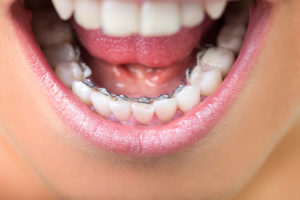
While the obvious advantage of choosing lingual braces over other orthodontic appliances deals with the invisibility of the braces themselves, there are other reasons why lingual braces might be the best option for you. Since their invention in the 1980s, lingual braces have slowly gained recognition as a viable option for orthodontic treatment. In fact, very few dentists even offer this technique because special training is needed to perform it. You will still need X-rays, molds and impressions of your teeth to begin treatment, just like you would when getting any other orthodontic treatment. The process is relatively easy to install them, as the brackets are glued to the lingual side of the teeth with a wire and elastics (if needed) to help move the teeth into position. Lingual braces are always on during treatment, so they are constantly shifting your teeth into the correct position without you or others noticing. A similar treatment to lingual braces is called Invisalign, which uses a removable aligner to straighten teeth. Invisalign is a popular option because the aligner is clear and removable so most people don’t notice it’s there, but not everyone is eligible for Invisalign. While Invisalign is a great option, lingual braces tend to be more helpful for patients with specific concerns. Athletes benefit greatly from lingual braces as it helps prevent mouth injuries since the brackets aren’t on the front of the teeth. Musicians, like those who play a wind instrument (flute, trumpet, clarinet, etc.), are also common wearers of lingual braces as they tend to not get in the way as much when playing. Lastly, those patients who don’t qualify for Invisalign typically choose lingual braces as it is the second most discreet option available. Depending on your needs and your orthodontist’s recommendation, you can choose which option you would like to get the beautiful teeth that you want, in the way that you want.
How To Begin Treatment
As mentioned previously, you must be eligible for certain types of orthodontic treatment to receive them. If you are interested in lingual braces, you will first need to visit with your orthodontist to have a consultation and evaluation to determine whether lingual braces are your best option. If you are a candidate, you will have impressions taken of your teeth which will be sent to a lab to create your custom-made brackets and wires. Afterwards, the brackets and wires will be bonded to your teeth to begin treatment. It is important to note that while lingual braces are a great way to keep your treatment unnoticed by others, the braces themselves are more difficult to clean since you can’t see them. For this reason, it is extremely important to clean your teeth thoroughly each day because it will be easier for food to get stuck and bacteria to grow in areas that are hard to see or reach. Another reason why it is important to consult with your orthodontist before choosing lingual braces is the price. Traditional braces typically range from $3,000-7,000, but lingual braces can be anywhere from $8,000-10,000. For patients who are on a budget, this is something to consider as you are in the decision-making process. Check with your dental insurance to see how much they can cover for orthodontic treatment. While many plans don’t offer coverage for adults over 18, many do partially cover children under 18. How much coverage will depend on your provider, so make sure to contact your insurance company for figures and amounts before you or your child begins treatment.
Get Started Today
At Belmar Orthodontics, our team is certified and trained for installing lingual braces. We are ready to help you and your family get the smile you deserve in a way that is most comfortable for you. For a consultation about lingual braces or more information about orthodontic treatment options, call our office at (303) 225-9016. Your journey to a healthier smile starts today, so call now!
The Impact Of Straight Teeth On Oral Health
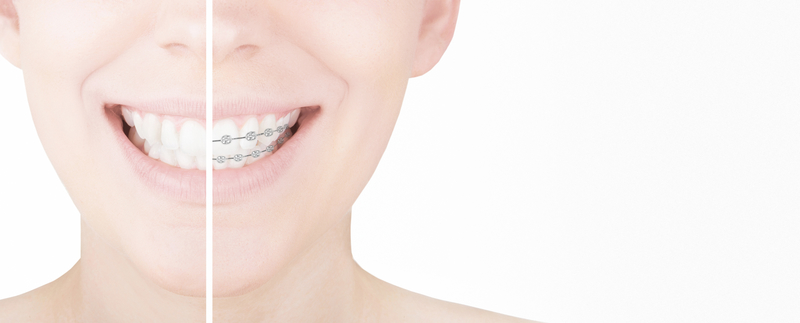
Many orthodontic patients use braces so that they can have straight teeth, but that’s not the only reason why orthodontic care is so important. Having straight teeth can minimize the likelihood of tooth decay and tooth loss while improving your bite, which affects your ability to chew and speak. Correcting crooked teeth can also improve your oral hygiene and strengthen teeth. Learn more about the positive effects that straight teeth can have on your oral health through this guide!
How Straight Teeth Can Help You
One of the main goals of braces is to create a straight smile and correct any orthodontic issues that may prevent teeth from remaining straight. While orthodontics does focus on straightening patients’ teeth, this is not the only purpose of receiving orthodontic care. Whenever a patient has malocclusion, or bad bite, caused by crowded or crooked teeth, daily oral hygiene can become a difficult task. Malocclusion can also stem from teeth that are out of alignment, or jaws that do not meet properly. Thumb sucking or accidents to the teeth can also cause malocclusion. As oral hygiene becomes more difficult to maintain, the likelihood of dental complications, such as tooth decay, periodontal disease, and tooth loss, increases. An improper bite that goes unaddressed can negatively affect chewing and speaking, and wear down tooth enamel. Correcting these problems is of utmost importance to your orthodontist as they seek to give you the best care possible. Orthodontic care that helps straighten teeth can decrease and ultimately eliminate the chances of any of these complications from arising. With straight teeth, patients can better brush and floss their teeth, which will help strengthen them, while easily monitoring any changes that may occur.
What To Expect With Orthodontics
As you begin your orthodontic treatment, there are a few tips that you should know to prepare yourself for what will be expected of you during your time with braces. Although there are some challenges with straightening adult teeth versus children’s teeth due to the pliability of the jawbone, modern technology allows any adult of any age the opportunity to correct crooked teeth with remarkable success. You will first meet with an orthodontist for an evaluation and orthodontics consultation to determine what option is best for your mouth. Any oral health issues, such as gum disease, will have to be resolved before you can begin treatment. Adults have a variety of options to choose from for their orthodontic care, with many discreet options, such as ceramic or clear braces, lingual braces, and Invisalign clear removable retainers, that are available for your needs.
For children, treatment is similar to that of adults and can start as early as the age of 7. Having an orthodontic examination early on can prevent the progression of orthodontic issues that are present and allow the orthodontist to monitor the development/eruption of teeth. Aesthetically-minded treatment options, such as incognito lingual braces, are available for young children who may be self-conscious about their orthodontic care. Most children and adults can expect treatment for 1-3 years, followed by a period of time in which a retainer will be used to keep teeth in their newly aligned positions. Regular dental and orthodontic visits will be necessary to track the progress of teeth and manage any plaque or tartar buildup that could accrue between teeth.
How To Keep Your Straight Teeth Healthy
Once you or your child finishes orthodontic treatment, it is important to continue certain oral health standards to maintain the health of your gums and teeth. Eating a healthy diet, with or without braces, while limiting the amount of sugary foods you consume, will prevent plaque that can stain or damage your teeth. Brushing with fluoride toothpaste and flossing each day will also prevent any plaque buildup, prevent cavities, and keep your teeth clean. Good oral hygiene is especially important for patients wearing braces because you are more susceptible to plaque buildup around brackets and underneath wires. For additional protection, consider using a mouth guard while playing any sports or activities that could damage your mouth, if hit. Creating a good oral health regimen before you start orthodontic treatment will help you have a healthy mouth during and once braces are removed.
For more information on the importance of straight teeth on oral health and what you can do to get the straight teeth that you want, call Belmar Orthodontics at (303) 225-9016! If you’re ready to change your smile for the better, our team is ready to help you reach that goal for you and the rest of your family!
Is It Too Late For Me To Get Braces?

Most orthodontic patients receive their braces at a young age, typically during the teenage years. Are the teenage years the best time to receive braces, or will treatment work just as well as an adult? With the technological advances that have occurred, adult orthodontics have more options than ever to straighten smiles of all ages. Some benefits of adult orthodontics include correction of life-time dental issues, faster treatment time than former technology, and increased confidence. If you’re ready to change your smile, learn how adult orthodontics can help you through these tips!
Braces Throughout The Years
Modern advances in orthodontic treatment has revolutionized how quickly children and adults alike get the healthy and straight smiles they want, and allowed people of all ages to improve their oral health, no matter their age. For many years, traditional metal brackets were the only option to straighten teeth, but as technology has advanced, a variety of aesthetic bracket systems have been developed to give you the smile you want with braces that are less noticeable and easier to maintain. Permanent braces now come in two options: metal or ceramic. Ceramic braces are matched to teeth color, making them nearly invisible during treatment. Lingual braces are also an option, which are completely disguised from others as they are attached to the back of the teeth. Removable orthodontic appliances have recently come into play as a clear plastic aligner that is used and removed as needed. These aligners are advantageous to adults because they are less visible and easier to clean and maintain, which comes in handy for those adults busy with work and family life. As the options for braces have broadened throughout the years, so has the number of adult patients being treated for braces. Technological advances in the orthodontic industry now allows for more patients, even those who have passed the prime age for orthodontic care, to change their smiles during any part of life.
Benefits of Adult Orthodontics
The American Association of Orthodontists reports that of the 4.5 million Americans that are currently receiving orthodontic care, 25% of them are adults. Although childhood is the ideal time to receive braces, adult orthodontics has become a popular option for those who couldn’t receive treatment during adolescence. Some benefits of adult orthodontics include:
- More discreet treatment methods
- Correction of lifetime dental issues
- Faster treatment time
- Increased self-esteem and confidence
Adults ultimately have more options when choosing what braces and treatment plan is best for them. Orthodontic care protects both kids and adults against tooth decay, tooth loss, gum disease, impaired speech, chewing and jaw problems. While cost is a factor, you will still need an oral evaluation and orthodontics consultation to determine your candidacy for certain procedures and treatments. For the first time, adults of any age who have otherwise healthy teeth can benefit from orthodontic treatment at any point in life.
What To Expect With Adult Orthodontics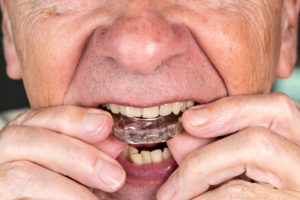
Typically, it is more difficult to manipulate an adult’s fully-developed jawbone compared to the pliable jawbone of a child, but modern-day advances now allow orthodontists to correct crooked teeth with great success and precision. Any oral health issues, such as periodontal (gum) disease, will have to be resolved before teeth can be straightened, so meeting with your dentist and orthodontist will be an important first step to take before treatment can begin. If you’re considering orthodontic treatment to correct any cosmetic or bite issues, consider the following:
- The entire process may take longer for an adult than a child. Typical treatment time averages two years, but varies from person to person.
- Fully-developed bones in adults have stopped growing, so some structural changes cannot be achieved without surgery.
- Adults may need to see a periodontist, as well as a dentist and orthodontist, to ensure that treatment will not be complicated by bone loss due to gum disease.
Adults who have had teeth removed in the past might have difficulties with orthodontic care as old extraction sites might not be suitable for teeth to move into. Adult patients receiving treatment also have a higher risk for root absorption than children do as their bodies reabsorb the root of the tooth, leaving no room for anchorage. This process causes teeth to loosen and fall out over time due to gum instability. Since braces and other appliances are cemented directly to the teeth themselves, it is important that all patients, even adults, maintain good oral health practices that will prevent the areas around the brackets from developing plaque and tooth decay, which will ensure that they get the best (and healthiest) smile possible.
Schedule An Appointment Today
If you are interested in adult orthodontics or are wanting to improve the look of your smile, call Belmar Orthodontics at (303) 225-9016 for a consultation to learn about which options are available for you. Our dedicated team of professionals are determined to help you get the smile that you want and improve your oral health!
Adjusting to Lingual Braces

There are four main types of braces that include traditional metal braces, ceramic braces, lingual and Invisalign treatment. When patients want sturdy metal for effective straightening power, but they don’t want visible metal, lingual braces is the option to choose. This consists of an orthodontic appliance attached to the back of the teeth. With any orthodontic appliance attached to the teeth, there will be an adjustment period for patients.
Why Get Braces?
Many people wonder why they would need orthodontic treatment if they are already seeing a dentist. However, a dentist is not the same as an orthodontist. Both have gone to dental school, but only an orthodontist can correct bite and alignment issues that would cause oral health diseases, problems with speech and issues with eating. Straighter teeth are teeth that are easier to clean, helping you avoid oral health diseases.
The teeth are less likely to crack, chip, fracture or break from uneven biting pressure when they are straighter. Studies show that people who straighten their teeth often feel more attractive, confident and motivated, and others view them that way as well. Braces can not only help reduce your risk of oral health problems (or help them to go away), but they can make you feel like a million bucks from the beautiful smile you receive.
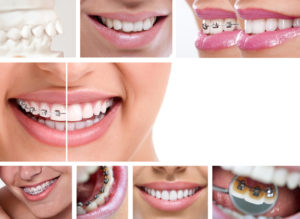
What Are Your Options?
In the past, traditional metal braces were the only braces option patients could get. Today, there are four main orthodontic options. Those include:
- Traditional Metal Braces – These are the classic metal bracket and wire option that is most commonly chosen by patients. Patients who chose this option come in to have their wires tightened at each appointment.
- Ceramic Braces – These braces are a close cousin to metal braces. They have the same bracket and wire design of metal braces, except that they are made out of ceramic material. This helps decrease demineralization during your orthodontic treatment. Ceramic material is also naturally white, helping these braces to blend in with your teeth more than metal would.
- Lingual Braces – These are metal braces that are placed on the back of your teeth. Instead of just a square bracket, the metal must be custom-made to the shape of the back of your teeth. This is a discrete option that adults and teens love.
- Invisalign Treatment – This is the most invisible option available to our patients. Invisalign is a series of transparent aligners that you wear at night and throughout the day. You can remove them for eating, playing sports, cleaning your teeth and more.
Adjusting to Lingual Braces and More
For many patients, the adjustment period with their orthodontic appliance will be a new experience. Getting braces on the teeth is a new and exciting chapter for anyone that is starting on their journey to a better smile. However, your mouth does have to physically adjust to orthodontic appliances. With traditional metal, ceramic, or lingual braces, there are orthodontic parts that will be bonded to the teeth with a cement-like bonding material.
The application of that bonding material with your teeth will place extra pressure on them for several days. You may have to take an over-the-counter painkiller (like Tylenol) to help ease that aching feeling. Soft foods like yogurt or pasta will be better after the braces application for sensitive teeth. Your tongue will have to adjust to orthodontic appliances as well. For traditional metal braces on the front of your teeth, they may feel bulky as they rest against your lips.
With lingual braces, your tongue may feel more crowded or may constantly run into the brackets. With both of these options, a patient’s mouth becomes used to the appliances so quickly that they won’t even notice the braces after a few days. Your smile won’t look bulky with your appliance, but it will start to look straighter over time. Cleaning your teeth will take a bit more work, but this too will become second nature to you. With each new braces adjustment, your teeth may feel a bit sore, but that feeling will go away quickly.

Keeping Your Smile Healthy
You can spend 18 or more months straightening your teeth, only to have them be decayed at the end of your treatment. However, this doesn’t have to happen if you are taking meticulous care of your teeth with braces on them. Patients should be brushing and flossing their teeth whether or not they have braces on them. The American Dental Association recommends that every person brush their teeth at least twice a day. With braces, you want to brush them very well after every meal to dislodge food that would cause decay.
Flossing is key as well, as flossing gets about 40% of your tooth surfaces that brushing misses. If you skip flossing all the time, all those tooth surfaces can decay. With braces, you won’t be able to do the normal flossing you’re used to. Lingual braces can be even harder if you can’t see where you are flossing. This is where flossing tools for braces come in handy. Invest in threadable floss or flossers (which is very similar). This is floss that you stick through the cracks in your teeth and pull through like a sewing needle. You floss the tooth, scraping the teeth as you go, and pull the floss all the way through the tooth to start on a new one. It only takes a minute or so more than normal flossing, but will help prevent decay with your lingual braces.
Braces Are an Investment
Your teeth may take a bit more time to keep clean with braces on them than they were before. However, with braces such as lingual braces, you’re making your smile straighter and more beautiful for years to come. That straightness will not only help make cleaning the teeth easier for years, but it will help your appearance and your confidence. If you want all the benefits of a beautiful, straight smile, call Belmar Orthodontics today at (303) 225-9016!
How Do Lingual Braces Compare with Other Options?

Deciding to get braces is a an excellent decision that will not only improve your oral health and your smile, but your confidence as well. There are countless benefits to straightening your teeth. However, the first step is choosing a braces option that is right for you. Do you want the strongest braces you can get? Is there a bite problem that you need to correct? Do you want to hide your braces as much as possible? Your goals and lifestyle will determine what braces option is right for you. Learn how the popular lingual braces compare with other options!
Lingual Braces 101
Back in the day, there was only one option for straightening your teeth: metal braces. Many people have these bracket-and-wires option that is attached to the front of your teeth. In fact, it is still one of the most popular braces options today. This is partly because traditional metal braces are one of the only options that children can use to correct bite and alignment issues. However, over the years, it became more important to provide an orthodontic option that can still correct bite and alignment issues, but in adults. The main kicker was that many teens and adult shy away from braces because they don’t like the metal showing on their teeth.
That is why lingual braces were created. Using the same idea as traditional metal braces, you can achieve the same results as traditional braces, only with a hidden treatment apparatus on the tongue-side of your teeth. Patients that choose this option have impressions made of their mouth that focus on the backs of their teeth. After being sent to a special lab, metal backings for the teeth are made that are then bonded to the back of your teeth. These also have small metal brackets and wires that discreetly correct bite and alignment issues over time.
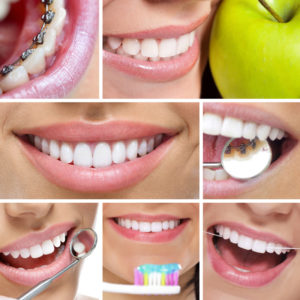
Traditional Braces Vs. Lingual Braces
There are not many differences between lingual braces except for the following:
- Lingual braces are custom-made specifically for a patient. Traditional braces are always the same brackets and wires that are used for all patients. Lingual braces have to be fit to a person’s individual teeth.
- The braces are hidden with the lingual option. Brackets, wires and all metal is attached to the back of the teeth instead of the front. You can go your entire treatment without anyone knowing you have braces.
- This option is ideal for musicians. Brackets and wires on the front of the teeth can interfere with wind instruments in some people. When the brackets and wires are on the tongue-side of the teeth, you don’t get those problems.
- Athletes also benefit because there are no brackets or wires that can shred the cheeks if an injury happens in contact sports.
- You straighten your teeth while keeping your smile bright and beautiful with lingual braces.
We love traditional metal braces, lingual braces and all our other orthodontic options. It generally comes down to aesthetics with most patients, and that’s where lingual braces has traditional metal ones beat. The comparison between ceramic braces and lingual braces is almost exactly the same, as ceramic braces are modeled after traditional metal braces. The only difference is that they are made of white ceramic material instead of metal material.
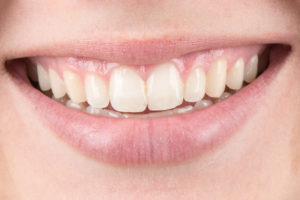
Why Lingual Braces Over Invisalign?
There are many patients that wonder why they shouldn’t simply get Invisalign. These transparent aligners are offered at our office, and they do excellent work to straighten the teeth. We actually recommend these to many teens and adults. However, they do have their limitations, which is why we recommend lingual braces over Invisalign in some cases. Invisalign treatment works to straighten a patient’s mouth in secret. Lingual braces seek to achieve this same incredible benefit. However, only lingual braces can correct bite and alignment problems that are severe.
The metal-and-bracket design makes them incredibly sturdy for drawing a bite in if a person has overbite. It can also do the opposite and correct underbite and other other type of bite problem. However, Invisalign aligners have a much harder time with that because they don’t have brackets and wires. Both options are great if a patient simply wants to straighten their teeth. Both options are also very hidden in the mouth, making them appealing to teens and especially adults. However, when bite problems exist, you want to kill two birds with one stone by straightening and correcting bite. If this is you, then opt for lingual braces instead of Invisalign.
Choosing Your Braces
We take choosing specific braces on a case-by-case basis. There are four amazing braces options available for patients to choose from, and each were designed to target different things that patients need. Patients want the sturdiness of metal braces, but don’t always want them visible. That is why lingual braces are a great hybrid of the other types of braces we offer. You get the functionality and strength of metal, but the hidden feature like Invisalign provides. We want every patient to be sure about their braces option before they have their orthodontic appliance made. To find out which option will suit you best, call Belmar Orthodontics today at (303) 225-9016!
What are the Benefits of Lingual Braces?
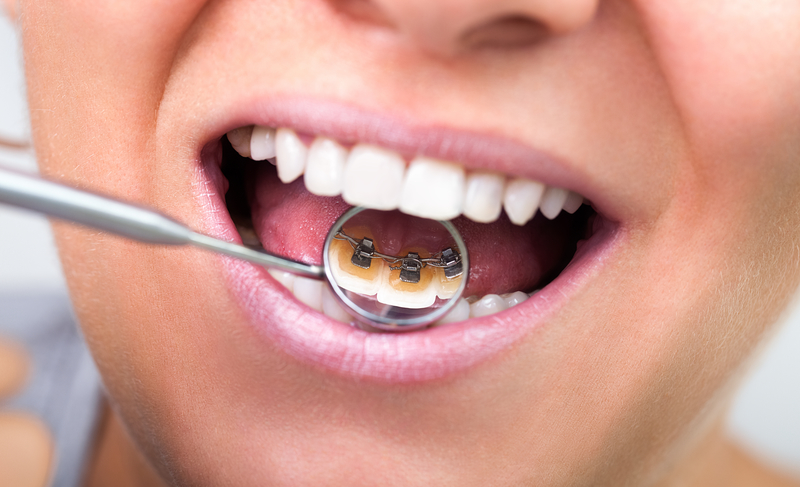
Many patients are getting excited about lingual braces as an option for their orthodontic care. These types of braces can correct long-term or lifetime dental issues. They are also hidden in a patient’s mouth and because they’re not on the front of the teeth, they are a perfect option for athletes or musicians to perform better. Thinking about leveraging the power of lingual braces to straighten your smile? Consider the benefits that lingual braces can offer you and ask about your set today!
What’s the Difference Compared to Other Options?
Lingual braces is an exciting option for patients who want to combine the benefits of Invisalign transparent aligners with the sturdiness of traditional metal braces. These type of braces are also known as “incognito hidden braces” because they rest behind your teeth instead of on the front. They too, are made from metal, except this metal is usually gold instead of silver. Plus, instead of simple brackets and wires, the metal attachments cover the entire back of your tooth surface.
There are brackets and wires, but they are on the tongue-side of your teeth. Lingual braces are amazing because they can achieve the same results as traditional orthodontics in a manner that is inconspicuous and undetectable. They are tightened at each appointment just like traditional braces and can correct bite and alignment issues with ease. How do you benefit from these type of braces?
- Correction of long-term or lifetime dental issues
- Less noticeable orthodontic treatment
- Good orthodontic treatment for athletes and musicians who play wind instruments
- Increased confidence during treatment compared to traditional methods
- Elevated self-esteem after treatment
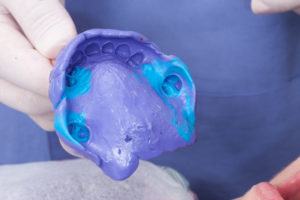
Difference Between Lingual and Traditional Braces
Not all metal braces are alike. Even though lingual braces are made out of metal alloys, they are still different than traditional metal braces. Metal braces rest front and center on a patient’s teeth. They consist of the classic brackets-and-wires set-up, but they can make your smile look gray because of the metal. Depending on your oral health, you can have tooth staining and dental erosion during your time with braces. This can leave marks when the braces come off.
Compared to traditional braces, lingual braces are more ideal for athletes and musicians. Traditional braces can make it difficult for musicians to play wind instruments and can affect how a person blows. For athletes, they have to worry about dental emergencies caused by metal brackets and wires if they get hit in the mouth. There are no brackets or wires on the front of the teeth that will cut up the cheeks if a person gets hit in the face. However, both of these styles of braces are extremely effective at correcting bite and alignment issues.
Comparing Lingual Braces to Ceramic Braces
Ceramic braces are very similar in their style to metal braces. The only difference is that they are made from white, ceramic material instead of metal. Even the wires can be made white to match the teeth. This is a more aesthetic option for teens who like metal braces but don’t want them as noticeable. However, they are still much more noticeable than hidden braces would be. A teen or adult simply has to decide how noticeable they want their braces.
Invisalign Vs. Lingual Braces
If patients want hidden braces, then why not just use Invisalign treatment? This is a great orthodontic option, but it has its limitations. Yes, Invisalign is transparent on the teeth. However, those aligners cannot correct many bite and alignment issues, which many patients need. They are more ideal for patients who only need their smile a bit straighter. For any major orthodontic issue and especially bite problems, Invisalign is not the best option. Lingual braces combine the hidden aspect of Invisalign treatment, but with the sturdy structure of metal braces that can correct bite problems.
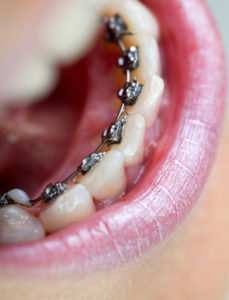
Choose Orthodontic Care
No matter what orthodontic option you choose, simply opting to receive orthodontic care for bite and alignment issues will improve your oral health immensely. Some people skip receiving orthodontic care because they believe they will save all that money. However, crooked teeth and bite issues can actually cost more money in the long run. How you ask? When your teeth are straight, they are very simple to clean with a toothbrush and quick to floss. However, when they are crooked, you will consistently miss many parts of your tooth surfaces. This can lead to quick decay, which will take dental work for every instance of tooth decay.
Flossing also gets very difficult when the teeth are crowded or crooked. A patient may not even be able to pass floss between the teeth if they are too crooked. That’s detrimental to a patient’s health, as 40% of tooth surfaces can only be reached through flossing. That leaves those tooth surfaces open to decay, enamel erosion, staining and infection. If this happens all over your mouth, you’re looking at spending a lot of money over a lifetime to fix all your oral health problems.
Get Your Braces
Opting to receive orthodontic care saves you the headache of bite and alignment issues, crooked teeth, and decay and gum disease that can happen. Correct these issues early-on and enjoy your smile for life. Call Belmar Orthodontics today at (303) 225-9016 to learn about lingual braces and your other orthodontic options!
Lingual Braces: Straighten Your Teeth Without Anyone Knowing!

Lingual braces can achieve the same effect as traditional orthodontics in a manner that is inconspicuous and undetectable. By discreetly attaching the braces to the back of the teeth instead of the front, Dr. T.C. Hardy can help you achieve straight, healthy and beautiful-looking teeth. Consider the benefits of lingual braces when you are deciding which orthodontic appliance you want!
How Do Lingual Braces Work?
No matter what braces option you are going to get, we always meet with patients to first have an orthodontic consultation. At this consultation, Dr. Hardy will examine your teeth, checking their straightness as well as your bite and alignment. The size of your teeth matter if you request to have lingual braces put on your teeth. Dr. Hardy will examine the backs of your teeth to determine if you are a candidate to receive them and if brackets and wires will comfortably fit on the tongue-side of your mouth.
Once Dr. Hardy has determined that you are an ideal candidate for lingual braces, he will take impressions of your teeth that are then sent to a lab for custom-made brackets and wires. At your next appointment, we will gently bond the metal to the back of your teeth with the attached brackets. We will then run a metal wire through the brackets. The process is quite similar to what is done with patients who choose traditional metal braces on the front of their teeth. However, instead of your cheeks adjusting to the feel of the brackets, your tongue will be the part adjusting to the new appliance. At each appointment, Dr. Hardy will examine your teeth and adjust the wires as needed to straighten your teeth properly.
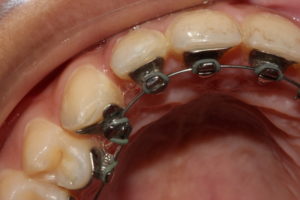
Facts About Lingual Braces
- You can achieve the same results as traditional braces, only with a hidden treatment apparatus on the tongue-side of your teeth.
- These braces have to be custom-made to the back of your teeth, because teeth size can vary from patient to patient.
- Children are not usually candidates for lingual braces. It all depends on their age and the size of their teeth. Baby teeth are small and with many patients, there is not room to fit brackets and wires on the back of the teeth. Children who have larger teeth may be candidates.
- Adults use these braces much more often than teens and children for both reasons of teeth-size and professional/social aspects.
- Patients who play wind instruments will have an easier time playing if they have lingual instead of traditional metal braces.
- A dentist must take continuing education courses and receive additional training in order to provide lingual orthodontic options to patients. This means that not all dentists give patients this option like Dr. Hardy does.
- Brackets placed on the back of the teeth are ones that others will not be able to see. You can go throughout your entire orthodontic process without others knowing that you have braces. However, others will notice your teeth becoming straighter over time.
- Because lingual braces are made of metal brackets and wires (just like traditional braces), they are able to correct bite and alignment issues. Other braces options like Invisalign, are not able to do that.
- You may want to invest in a waterpik for your teeth. Lingual braces have brackets, so food can get stuck in them, which is why you would want a waterpik to get the food out.
- Patients can care for their lingual braces the same as they would traditional metal braces.
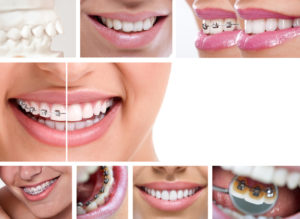
How Do They Compare?
In the past, there weren’t many options when it came to straightening your teeth. Many cultures simply tried cruel methods of pushing and forming the teeth until metal braces were created. Over several decades, metal braces were changed and adapted to how people lived. In modern times, people are ever busy and on-the-go. Aesthetics plays a huge role in how people view themselves and how others view them. This is why hidden orthodontics were created.
Lingual braces are a great way to straighten your teeth in secret. Your other options include:
- Traditional Metal Braces: These are almost the same as lingual braces, except they are made of silver metal alloys instead of gold ones. The brackets and wires go on the front of the teeth, where they are noticeable to others.
- Ceramic Braces: Similar to metal braces, this orthodontic appliance also rests on the front of your teeth. They are made of white, ceramic material, helping them to blend in more with the teeth. However, they are still somewhat noticeable.
- Invisalign Treatment: This orthodontic option involves no brackets and wires bonded to your teeth. You receive a set of transparent aligners custom-made for your teeth each week, that you wear for 20-22 hours of every day. However, although this option makes oral hygiene easier, they cannot help many bite and alignment issues. That is why patients opt for a discreet lingual option that can correct those issues.
Getting Your Lingual Braces
At Belmar Orthodontics, we know that getting braces is a big deal for teens, adults, and even children. Patients worry about their appearance often, which is why options such as Invisalign and lingual braces were invented in the first place. We are excited to be able to offer adults and teenagers an alternative to traditional metal braces with hidden lingual braces! If you want to know more about these braces or want to schedule your consultation, call Belmar Orthodontics today at (303) 225-9016!
Parts of Braces and Their Importance
What role does each part of braces play? The brackets, bands, wires and even our oral health guidelines all play a vital role to the health of your teeth and the success of your teeth straightening. Braces have been perfected over the years to provide you various options for teeth straightening through traditional metal braces, lingual braces, ceramic clear braces, Invisalign and more. These options weren’t available in years past, and each option has been perfected to provide you quick and efficient teeth straightening. Find out why each part of braces is important and what role each piece plays when it comes to your oral health.
Parts of Braces
Traditional metal braces have been around for decades. We still offer these braces because frankly, they work so well. Metal braces are also the most popular orthodontic option because they work to straighten your teeth the quickest and are the most cost-effective orthodontic option you can find. The metal we use is strong and sturdy. Metal braces are made from stainless steel, but can also be used in combination with titanium. There are three main parts of braces: the brackets, the wire, and the ligature elastics that go around the brackets:
- Brackets – These are the small metal pieces that are bonded to each tooth center using special glue. This glue ensures that the brackets stick to your teeth. The glue is gentle enough that it can be removed once your time with braces has finished. Brackets are made of stainless steel but also can be made white (tooth colored) or clear. These brackets hold the archwire for the teeth.
- Wire – This wire is actually known as the “archwire”. It is the metal wire that connects all of the brackets together in your mouth. You will have one archwire that is along the upper teeth and one that is along the lower teeth. This wire curves around the teeth and puts pressure on the teeth so that they come into proper alignment in the mouth. This is the main player that works to move your teeth in the right direction.
- Ligature Elastics – These are the rubber bands that attach the archwire to the brackets on each tooth. Without these ligature elastics, the archwire would not be sturdy and couldn’t do its job.
Additional Parts of Braces
There are more than just these three parts of braces.
- Headgear – This is an external appliance used in orthodontic care to help realign the face and jaw during your time with braces. There is retraction headgear and protraction headgear. Retraction headgear is an appliance used to retract the upper jaw. Protraction headgear moves the upper jaw forward and into proper alignment with the lower jaw. Headgear will consists of a single strap that fits around your neck and attaches to the front of your teeth. There is a second type of headgear that attaches to your braces, but the headgear has straps that fit over your head and neck. Not all patients will receive headgear unless it is really needed.
- Springs – Many braces have springs to help push and pull the teeth in the right direction. These springs generally attach to the arch wires and are located between the brackets of each tooth. The purpose of the springs are to open up or close up spaces between the teeth as they shift.
- Elastic Rubber Bands – Some patients need the additional shifting power of rubber bands to help the teeth move into place on schedule. These bands are attached to the brackets and will go from a lower tooth bracket to an upper tooth bracket. You will receive these rubber bands at your checkup and instruction for attaching your elastic bands at home until your next checkup.
Different Types of Braces
There are more than types of braces than just traditional metal ones. At Belmar Orthodontics we offer the following additional braces options:
- Incognito Lingual Braces – These braces quite literally go “incognito” as they are hidden inside your mouth. You will receive the same type of treatment as traditional metal braces. However, lingual braces are a hidden treatment apparatus on the tongue-side of your teeth. The brackets and metal are attached here and straighten your teeth without anyone else knowing.
- Invisalign – Invisalign is one of the stealthiest forms of teeth straightening. It is a series of transparent aligners customized to your teeth. You will change these aligners every 1-2 weeks until your smile is straight. They are easy to clean, easy to remove for eating and sports, and are virtually invisible in the mouth.
- Clear Ceramic Braces – Instead of metal, these braces are made from strong ceramic. They appear very similar to metal braces but are colored to match the shade of your teeth so they blend into the mouth. Even the archwires can be made white.
- Retainers – You will receive a retainer after your orthodontic braces treatment has been completed. Wearing your customized retainer is vital to maintaining a straight smile, as the teeth can quickly shift out of place. The first month is the most crucial as this is the time when your teeth will shift the most if a retainer isn’t worn.
Your Free Consultation
Keeping the parts of braces clean will greatly enhance your experience, so following our guidelines will help you find success with your orthodontic care. Proper braces appliances and all their parts will ensure that your teeth shift into perfect alignment in the least amount of time. If you would like to learn more about braces or need to schedule your appointment, call our Belmar Orthodontics office today at (303) 225-9016!
Straightening through Temporary Anchorage Devices
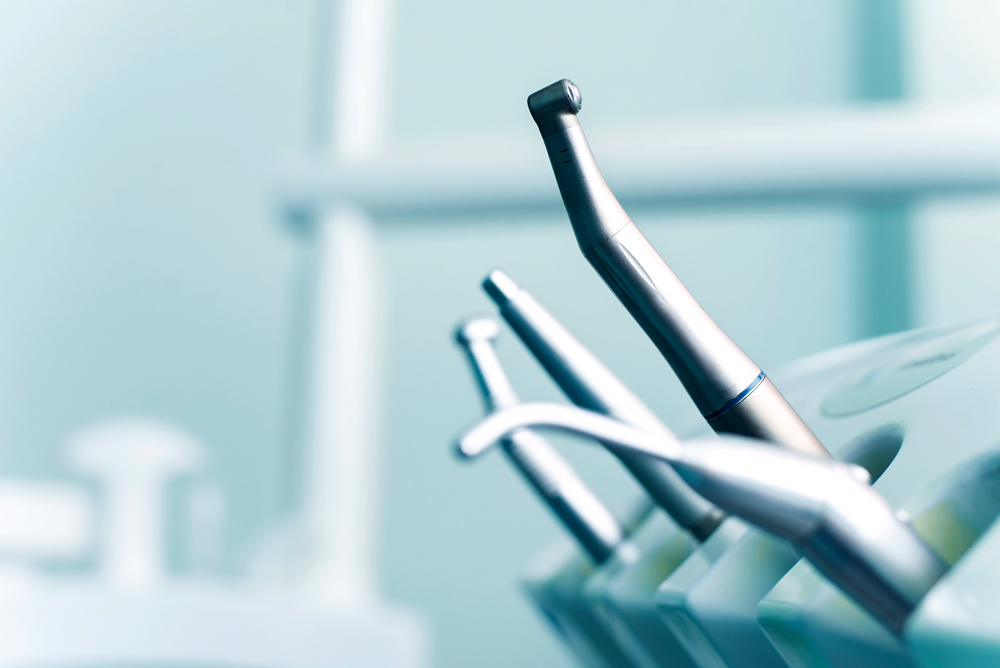
What are temporary anchorage devices and what can they do for you? Not all of our patients receive TADs for their teeth, but the ones that do greatly benefit from their straightening power. TADS are small titanium screws we use to help our our patients move their teeth. We place the screw in the gum and jaw bone and it acts as an anchor point for the teeth. We specialize in many methods of teeth straightening such as traditional braces, Invisalign, lingual braces and more, but also employ the use of TADs as needed to give our patients an exceptional smile. They can even aid in creating quicker tooth movement in our patients to achieve the desired straightening effect that is needed. Learn more about all of our straightening methods and which one is right for you. If you need TADs, you can trust in our expertise and finesse with giving you a straightening experience you will enjoy at Belmar Orthodontics.
The Advancement of Orthodontics
Orthodontics has come a long way from the crude methods of straightening practiced centuries ago. Extensive headgear and wires were used to straighten the teeth in the past. We benefit today from advanced technology that allows us many options when it comes to straightening the teeth, even discrete options. Temporary anchorage devices (TADs) are one of the methods we employ at Belmar Orthodontics when it’s in the best interest of the patient. Temporary anchorage devices work with braces to get your teeth straighter, faster. How do they work though?
Tidbits About Temporary Anchorage Devices
Temporary anchorage devices help shift the teeth into a straighter position when braces can’t do the job on their own. Braces are usually sufficient for most patients, but we want all of our patients to benefit from amazing, straight smiles and because of this we use TADs to get them all the way there. TADs consist of small, titanium mini-screws called “mini-implants” or “micro-implants”. These implants are fixed objects that braces use to push, pull, lift or intrude teeth while straightening. Just think of them as anchor points that are amazing tools for braces to get your teeth straighter. Once inserted, TADs do not move, but Dr. Hardy is able to use them to move the teeth in directions and distances that were not previously possible.
How Do They Work?
Temporary anchorage devices are installed quite easy, much like other orthodontic options. You have to be a good candidate for TADs to receive them. This means free of gum disease and you need a strong jaw. Your gum tissue and jaw area will be numbed much like they are numbed at a dental office before a procedure. Then Dr. Hardy will insert the tiny metal screws in areas that will help your teeth to move the most. The insertion process will be completely painless. Adjustment to TADs might take a day or two. The adjustment process should be no different than adjusting to metal braces. Adjusting to any type of straightening device takes time. We will remove the TADs once your teeth have moved into proper place. It’s literally that easy.
Traditional Straightening Options
We have many options for straightening instead of solely relying on traditional metal braces. We’ll still include metal braces on our list though:
- Traditional Braces – These are the standard metal braces that we all know and love. The great thing about “traditional” braces is that they are traditional for a reason. They are strong and highly effective with moving the teeth. Most of our patients get to dress up their brackets with a variety of colors at each visit too. This is usually the most cost-effective option when it comes to straightening the teeth.
- Ceramic Braces – These are basically your traditional metal braces, except for the fact that they can be made white to match the color of your teeth. The wires and brackets are both made white so they are virtually unnoticeable in your mouth. Ceramic braces are made of ceramic material. Ceramic is harder to stain and easier to clean than metal.
Discreet Straightening Options
Want a straight smile without others knowing? Try lingual braces or Invisalign!
- Lingual Braces – Take a step up from traditional and ceramic braces with lingual braces. These braces are called “incognito” braces because they do just that—go incognito! We customize lingual braces to the shape of your teeth. We then attach them behind the teeth instead of in front. You’ll receive all the strength and functionality of metal braces without the visibility.
- Invisalign – Invisalign is perhaps the most discreet form of teeth straightening. These transparent, removable aligners are perfect for teens and adults who want a straighter smile and don’t have bite problems. You will receive customizable aligners that change every few weeks so that the teeth are constantly falling into a straighter position. Oral care is easier, you can remove them at your leisure, and you will come out in the end with a straight smile—which is what we all want!
If you ever need to have TADs, just know that you are going to be having a powerful straightening experience that usually takes less time than it otherwise would to receive your beautiful, straight smile. We could all benefit from a little more time, right? To learn more about all your straightening options, call our Belmar Orthodontics office today at (303) 225-9016!
